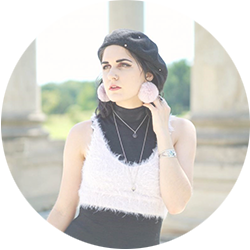







Welcome Back
Sign in to be closer to your community!
Follow other divas, like and comment
on their posts, message them, and see
who loved your posts!
Invalid username or password
You have not verified your account by clicking on the link we sent you via email. Please check your email folders (including your Spam folder) and click on the verify link sent.
Email is required
Password is required








Join FashionPotluck.com
Create your own profile in order to create content, follow other divas and like their posts, use our own messenger, and be a part of a growing international women community!
WELCOME TO OUR COMMUNITY
Fashion Potluck -
the first social media
platform for women.
You are free to read/watch & create content,
express your true self, and interact with others.
Join for free
Already a member? Log in here.
Purchase Alert
Dear Queen, you can only buy from one seller at the time. Please finish this purchase first in order to buy from another FP member
Comments
Please select one platform to continue
Please select one platform to continue
Please select one platform to continue
Please select one platform to continue
Please select one platform to continue
Please select one platform to continue
Please select one platform to continue
Please select one platform to continue
EDITOR APPROVED
You are wondering what is this 'Editor Approved'?
Well, this is pretty awesome! In order for the post to qualify and receive this accolade, it has to have a minimum of 700 words and two images (at least one original).
Receiving this accolade means two things: 1) Your content is amazing! Good job! 2) Your content qualifies for our monetization program. Every week two of the most read posts receive monetary rewards.
Have the badge & want to monetize your content?

FP-BLOG


Have you ever stopped to ponder the peculiar collection of symbols that make up Easter? What's the connection between resurrection, bunnies, and eggs, anyway?
While Easter is now widely recognized as a Christian holiday, it actually has much older pagan roots. Ancient rituals celebrated the arrival of spring and the renewal of life, and some of these traditions have been adopted, transformed and passed down through the ages.
In this article, we'll take a fresh and feminist perspective on Easter and its symbols. We'll explore how these traditions reflect our society's relationship with nature, fertility, and rebirth and how we can use this knowledge to deepen our understanding of this ancient holiday.
The History of Easter and Paganism
Before we dive into the specific pagan traditions associated with Easter, it's important to understand the history of this holiday and its ties to pagan religions. Easter is a Christian holiday that celebrates the resurrection of Jesus Christ, but it has its roots in the pagan celebrations of spring and fertility.
Many pagan cultures in Europe and the Middle East celebrated the Vernal Equinox, which occurs around March 20th and is deeply connected to the idea of renewal and rebirth. This was a time when the days began to get longer, the weather started to warm up, and plants and animals began to come out of hibernation. For these cultures, the Vernal Equinox was a time of great celebration and feasting.
When Christianity began to spread throughout Europe, the church recognized the importance of these pagan celebrations and incorporated them into their own religious calendar. The holiday of Easter was established as a way to celebrate the resurrection of Jesus Christ. Still, many of the traditions associated with Easter have their origins in pagan celebrations like the Vernal Equinox. Let’s take a look at them!

Resurrection
Did you know that many of Christianity's most beloved traditions and festivities are rooted in pagan myths that celebrate the divine feminine and the power of women? This is especially true when we examine the concept of resurrection during Christian Easter and compare it to the legend of the Sumerian goddess Inanna.
Resurrection has been a part of religious beliefs for thousands of years, and Inanna's story of death and rebirth actually predates the story of Jesus by several millennia. In a nutshell: Inanna - the goddess of fertility, sexuality, and war - descended into the underworld and was stripped of her power, only to rise again three days later and return to the land of the living. Sounds familiar?
Although the details may differ, the theme of resurrection is a universal one that has resonated across cultures and time periods.
 Northern Goddess Eostre
Northern Goddess Eostre
Easter Bunny
In a similar way, the Easter bunny has a surprising connection to the divine feminine, as it was originally adapted from a tradition where the central figure was also feminine.
The festival of Eostre was a pagan celebration of the spring equinox and the renewal of life in nature. According to legend, Eostre was the powerful northern goddess of fertility and was often associated with the hare, which was known for its ability to reproduce quickly.
As previously discussed, over time, many pagan traditions and symbols were adopted and adapted to fit Christian beliefs. The festival of Eostre was no exception, and the hare was eventually replaced with the beloved bunny as a symbol of modern Easter.
Decorating Eggs
What about the Eggs? Eggs have become one of the most recognizable symbols of Christian Easter, representing fertility and renewal. However, the tradition of decorating eggs is far from a recent Christian invention. It has a rich history that dates back to the ancient civilizations of the Mesopotamian Middle East. Early Christians in this region used to dye eggs during the Easter period and give them as gifts.
This practice eventually spread to Orthodox churches in Eastern Europe and eventually made its way to Western churches as well.
In conclusion, the influence of the divine feminine on Christian traditions is a reminder that the interconnectedness of cultures and religions runs deep. The presence of pagan goddesses such as Inanna and Eostre in the origins of Easter highlights the power and significance of the feminine in shaping our celebrations and beliefs.
At the same time, this analysis should prompt us to reflect on why so many powerful feminine figures, who were once widely recognized, have faded into obscurity, despite being the inspiration behind numerous traditions and stories that we still hold in high regard today.
Comments
Related Posts
- What Makes Men’s Accessories Worth Investing In Today? by Ekim Fashion 0
- How to Plan Seasonal Plush Inventory Without Overbuying by Harnel Inc 0
- 6 Winter Season Reasons to See a Dermatologist ASAP by Monica Quinn 0
More Posts
- Affordable Embroidery Services | Free Design Assistance by Embroidery Designs 0
- Beyond the Hardwood: Finding the Fun in Absurd Physics Games like Basket Random by Suzanna Brown 0
- Why Cowboy Ties Are Making a Bold Fashion Comeback This Year by Rocky Mountain Western 0
Vote content out
Reason for voting this content out?
Reason for voting this content out?


 Login with Google
Login with Google Login with Twitter
Login with Twitter







 by
by
Add Comments